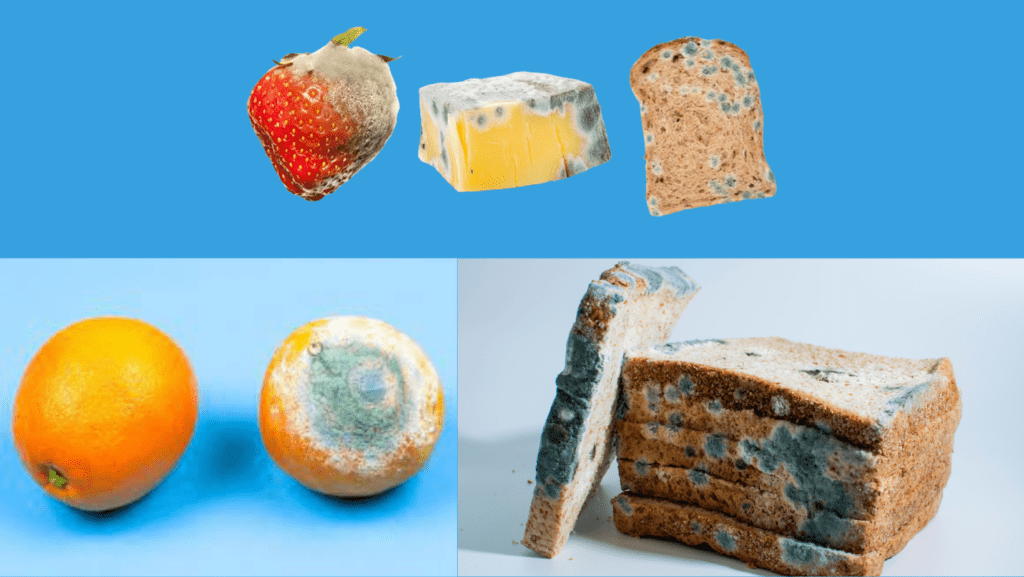With mold exposure becoming a rising concern linked to various health issues, a common question pops up: can mold take root and grow inside your stomach? The answer, like many things in biology, is both straightforward and surprisingly intricate.
Let’s explore the fascinating environment of your gut and see why mold struggles to find a comfy home there.
What is Mold?
Absolutely, while you can’t grow a fuzzy mold colony in your stomach, understanding mold is key. Mold is a type of fungus that consists of tiny, thread-like structures called hyphae. These hyphae intertwine to form a visible colony, often appearing fuzzy or cottony.
Mold reproduces by releasing microscopic particles called spores which travel through the air. These spores can number in the thousands and are present both indoors and outdoors. While some mold species are actually beneficial, decomposing organic matter, others can cause health problems in humans and animals if inhaled or ingested.

Why Mold Can’t Thrive in Your Stomach
The human stomach is a harsh environment for mold growth. Here’s why:
Stomach Acid:
Imagine downing a forgotten smoothie, only to worry about rogue mold spores hiding within. Thankfully, your stomach’s got your back (and your gut health) thanks to a potent mixture known as gastric acid.
This highly acidic environment boasts a super low pH level, creating an inhospitable environment that most mold species simply can’t survive, let alone propagate.
While you might occasionally forget about that lunch in the back of the fridge, your stomach’s natural defenses are a marvel of human biology, constantly working to keep you mold-free.
Constant Movement:
Unlike a moldy science experiment in your fridge, that leftover burrito disappears in your stomach thanks to a turbulent party. Constant churning and contracting muscles turn food into liquid mush, creating a hostile environment for mold spores to establish themselves. They wouldn’t stand a chance in this digestive washing machine.
Short Transit Time:
Unlike moldy leftovers languishing in your fridge, food doesn’t overstay its welcome in your stomach. Thanks to a short transit time, mold spores don’t have enough time to germinate and establish a foothold, let alone grow a fuzzy colony.
By the time they’d even consider setting up shop, they’ll be on their way out, swept along by the digestive current.
Therefore, under normal circumstances, mold cannot grow inside a healthy human stomach.
Rare Stomach Issues Mold Can Cause:
While mold itself may not take root in your stomach, exposure to mold spores can still lead to digestive problems. Here’s how:
Mycotoxin Impact:
While mold itself might not establish a cozy home in your stomach, the trouble can start much earlier. Many molds produce harmful substances called mycotoxins. These toxic substances can be inhaled from moldy environments or ingested through contaminated food.
Once they enter your body, mycotoxins can irritate the lining of your digestive system, leading to a variety of unpleasant gut issues.
Gut Microbiome Disruption:
Mold exposure can wreak havoc on your gut’s inner world. Fungal invaders produce nasty toxins called mycotoxins, which can disrupt the delicate balance of bacteria in your gut microbiome. This imbalance can lead to a mutiny within your digestive system, manifesting as a party of unpleasant guests: bloating, gas, and constipation.
In my experience, addressing mold exposure and supporting gut health often go hand in hand for a return to digestive peace.
Invasive Mold Infections:
While your stomach’s churning muscles and acidic environment make it a graveyard for mold spores, there are rare cases where you should be concerned. Invasive mold infections can creep into the gastrointestinal tract in individuals with weakened immune systems.
This can happen due to treatments like chemotherapy for cancer or chronic illnesses like HIV/AIDS. If you experience persistent abdominal pain, fever, or weight loss after starting a new medication or battling an illness, medical intervention is crucial. Early diagnosis and treatment are key in these rare instances.
If you suspect an invasive mold infection, it’s vital to seek immediate medical attention.
Conclusion
Unlike the damp, dark corners where mold thrives, your stomach presents a hostile environment. Its natural defenses, including stomach acid and muscular contractions, create a churning, acidic environment that makes it difficult for mold to establish itself.
While ingesting small amounts of mold likely won’t cause harm, chronic mold exposure can have negative impacts on your digestive system. Minimizing mold growth in your home through proper ventilation and cleaning is key to protecting your health from potential mold-related digestive issues.
However, if you experience persistent stomach upset, consult a doctor for a proper diagnosis and treatment.
Check Similiar Stomach Guide: Is Twisted Tea Bad For Your Stomach?
Frequently Asked Questions
Can mold actually grow in your stomach?
No, under normal circumstances, mold cannot grow inside a healthy human stomach. The stomach’s acidic environment (pH around 1.5-3.5) is too harsh for most mold species to survive. Additionally, the constant churning motion and short transit time of food (1-4 hours) prevent mold spores from establishing themselves.
If mold can’t grow in my stomach, why do I feel sick after being around mold?
Exposure to mold spores, even if they don’t grow inside you, can trigger digestive problems. Mold produces toxins called mycotoxins. Inhaling or ingesting these toxins can irritate your digestive system, causing symptoms like nausea, vomiting, diarrhea, and abdominal pain. Mycotoxins can also disrupt the balance of bacteria in your gut microbiome, leading to bloating, gas, and constipation.
Are there any situations where mold can grow in the stomach?
In extremely rare cases, individuals with weakened immune systems (due to chemotherapy, HIV/AIDS, etc.) might experience invasive mold infections in the gastrointestinal tract. This is a serious medical condition requiring immediate medical attention.
What are the symptoms of an invasive mold infection in the stomach?
Symptoms can differ but may include severe and persistent abdominal pain, fever, and weight loss. If you suspect an invasive mold infection, consult a doctor right away.
How can I prevent mold growth in my home?
Controlling moisture is key. Address leaks promptly, ensure proper ventilation in bathrooms and kitchens, and use exhaust fans during showers or cooking. Regularly clean up spills and condensation. Consider using dehumidifiers in damp areas.
What if I find mold in my house?
For small mold patches, you can try cleaning them yourself using a solution of water and bleach (wear gloves and proper ventilation). However, for extensive mold growth, professional remediation is recommended to ensure complete removal and prevent further health risks.
Are certain foods more likely to have mold?
Yes, mold can grow on various foods, especially soft or moist items like bread, fruits, yogurt, and cheese. Inspect food carefully before consuming, and discard anything with visible mold growth.
Can I cut off the moldy part of food and eat the rest?
Mold can spread through food even if you can’t see it all. It’s generally best to discard the entire food item if you notice mold.
Who is most susceptible to the health effects of mold exposure?
People with weakened immune systems, infants, and older adults may be more vulnerable to experiencing health problems from mold exposure.
Should I see a doctor if I’m concerned about mold exposure?
If you have persistent digestive issues or suspect an invasive mold infection, consult a doctor for proper diagnosis and treatment.
